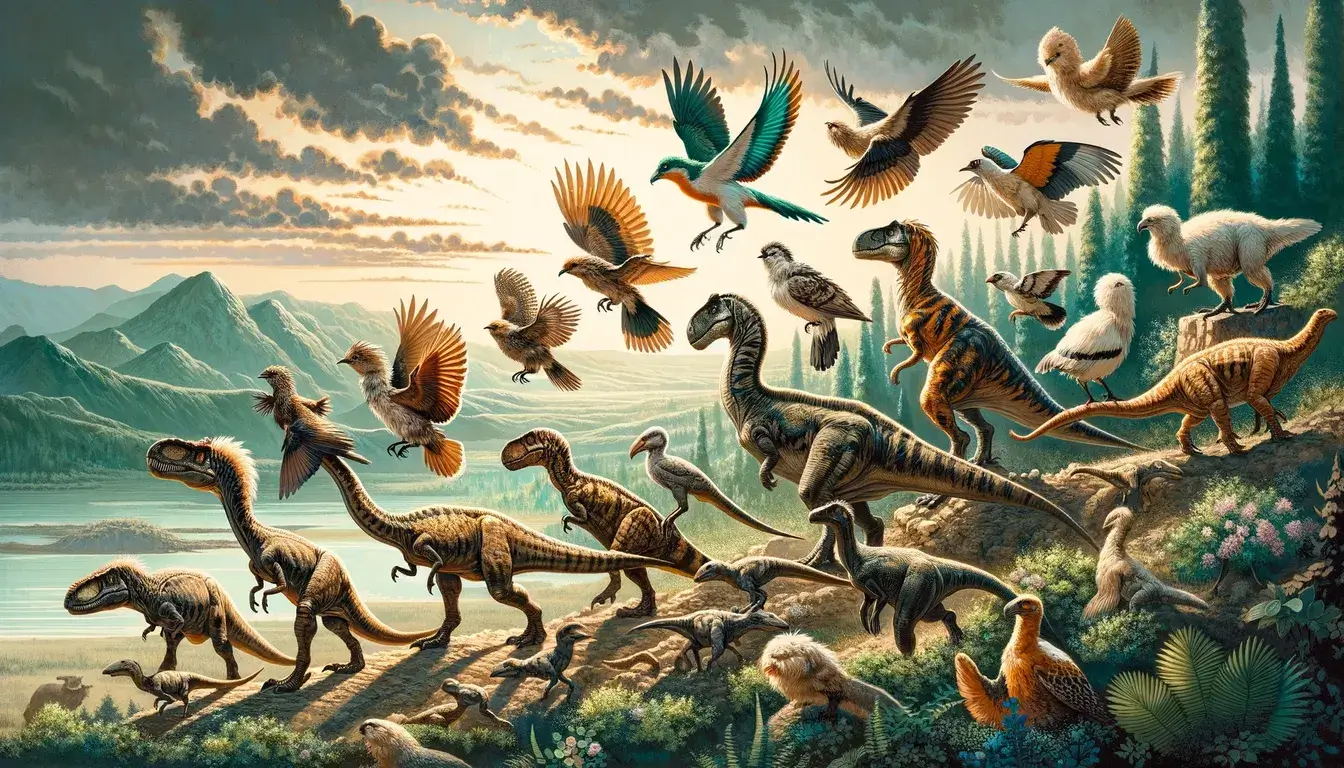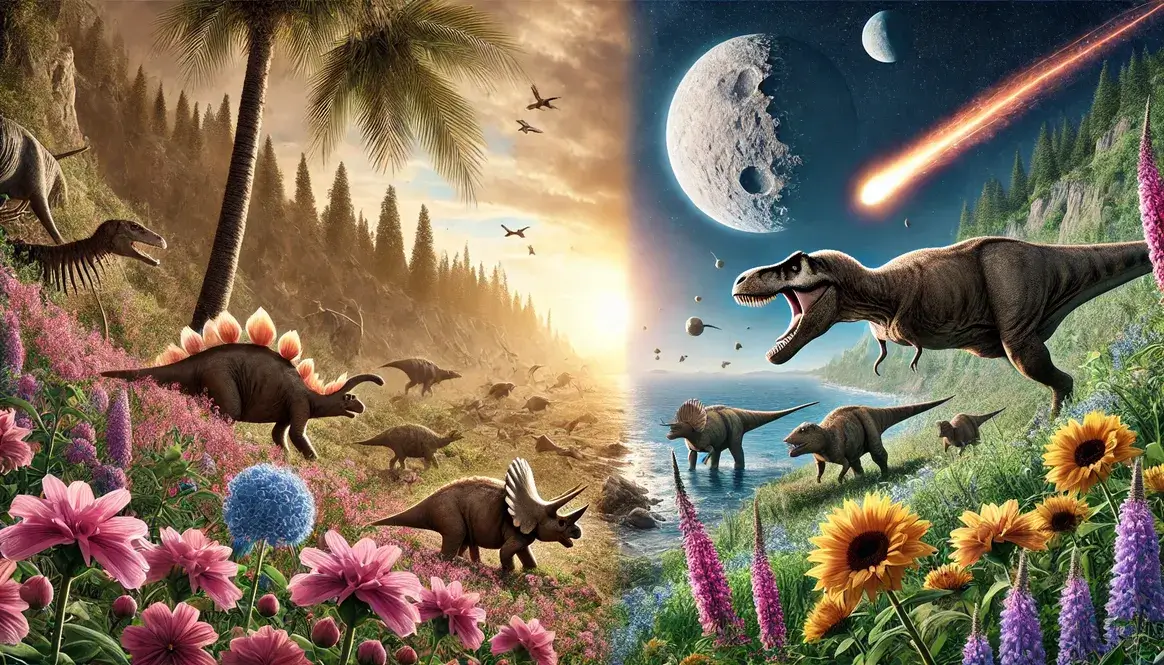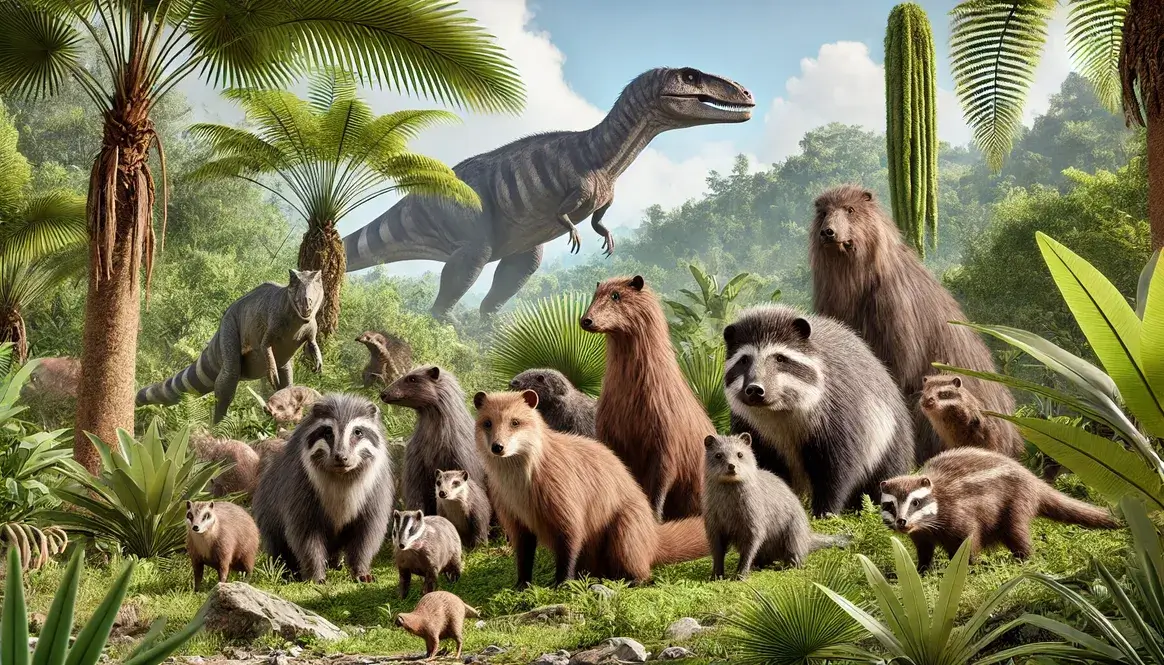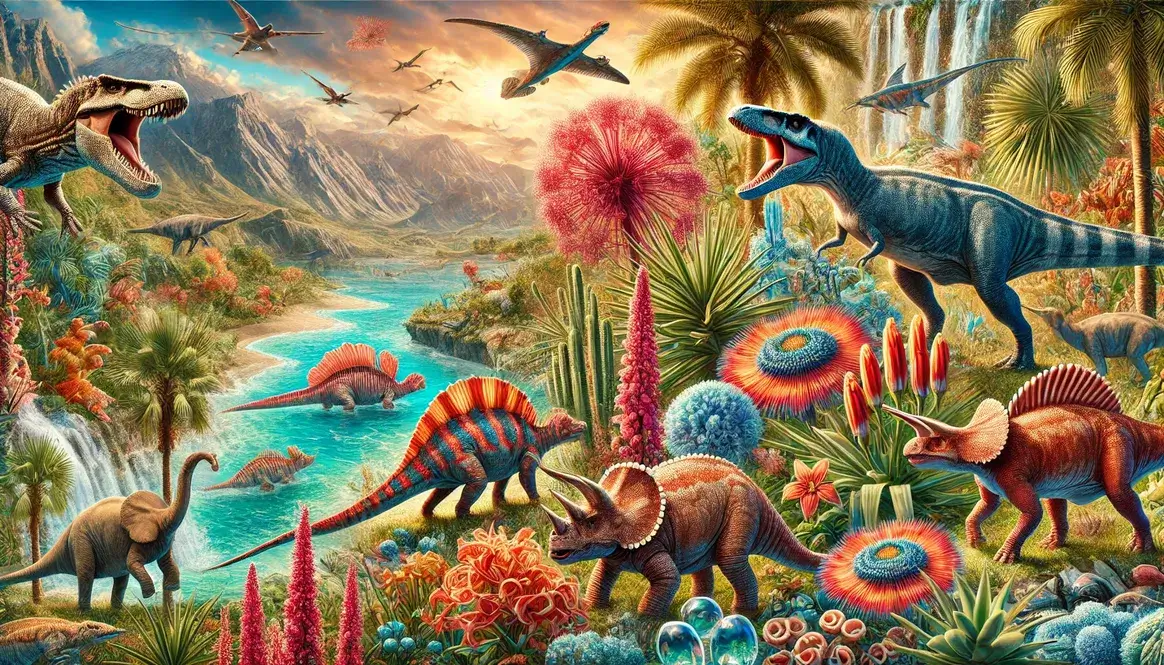Have you ever wondered how the chirping, soaring birds we see today came to be? It all started way back in the Cretaceous Era, a fascinating time in Earth’s history that lasted from 145 to 66 million years ago. This was the heyday of the dinosaurs, but it was also a crucial period for the evolution of birds.
In this article, we’ll take a thrilling journey through the Cretaceous Era to uncover how modern birds emerged from their dinosaur ancestors. Understanding this process is key to appreciating the incredible diversity of birds we have now. So, let’s spread our wings and dive into the past!
Evolutionary Background
Birds and dinosaurs might seem like they’re from completely different worlds, but believe it or not, they’re actually close relatives. Birds are a type of dinosaur that evolved from small, feathered creatures called theropods.

These ancient birds inherited some key traits from their dinosaur ancestors that set the stage for their success:
- Feathers: While many dinosaurs had feathers, birds took this to the next level. Feathers provide insulation, help with flight, and can even be used for display.
- Hollow bones: Bird bones are lightweight and filled with air sacs, an adaptation that makes flight easier. Dinosaurs like the mighty T. rex also had hollow bones.
- Three-fingered hands: Birds and many dinosaurs share a unique hand structure, with the first three fingers fused together. This eventually evolved into wings.
So next time you see a pigeon perched on a statue, remember: it’s really a small, feathered dinosaur! These ancestral traits were the foundation birds needed to diversify into the stunning array of species we have now.
Timeline of Bird Evolution
Early Cretaceous (145-100 million years ago)
The story of modern birds kicks off in the Early Cretaceous. This is when we start to see some of the first birds that would be recognizable to us today.
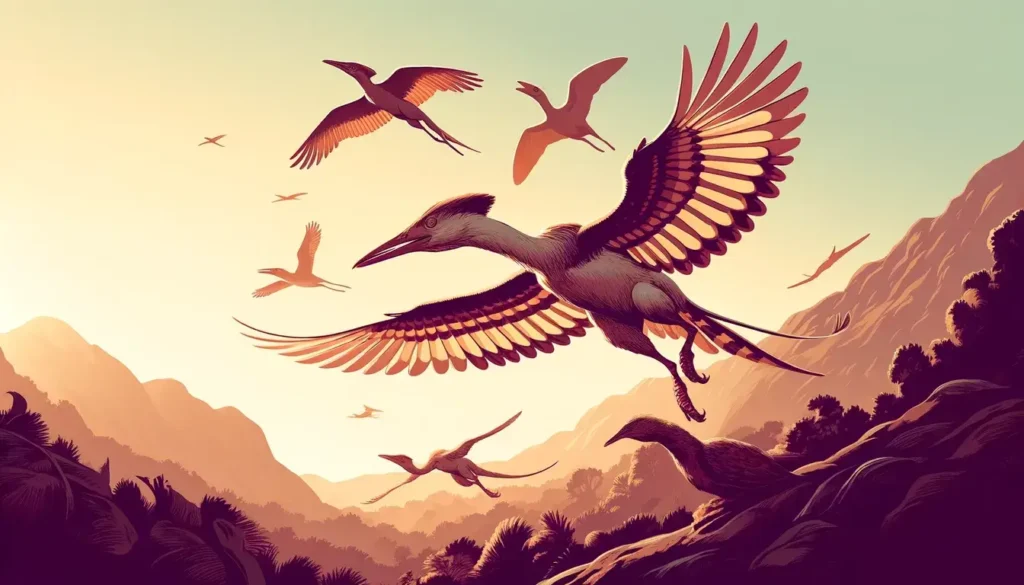
One of the most famous early birds is Confuciusornis. Living 125 million years ago in what is now China, Confuciusornis had:
- A toothless beak
- Long, blade-like wings
- A pygostyle (fused tail vertebrae) which supports the tail feathers
These are all traits we associate with modern birds. Fossils even show that Confuciusornis had long, display feathers on its tail, similar to modern birds like peacocks.
Mid-Cretaceous (100-80 million years ago)
As the Cretaceous marched on, birds continued to evolve and diversify. The Mid-Cretaceous saw the rise of a group called the enantiornithes, or “opposite birds”.
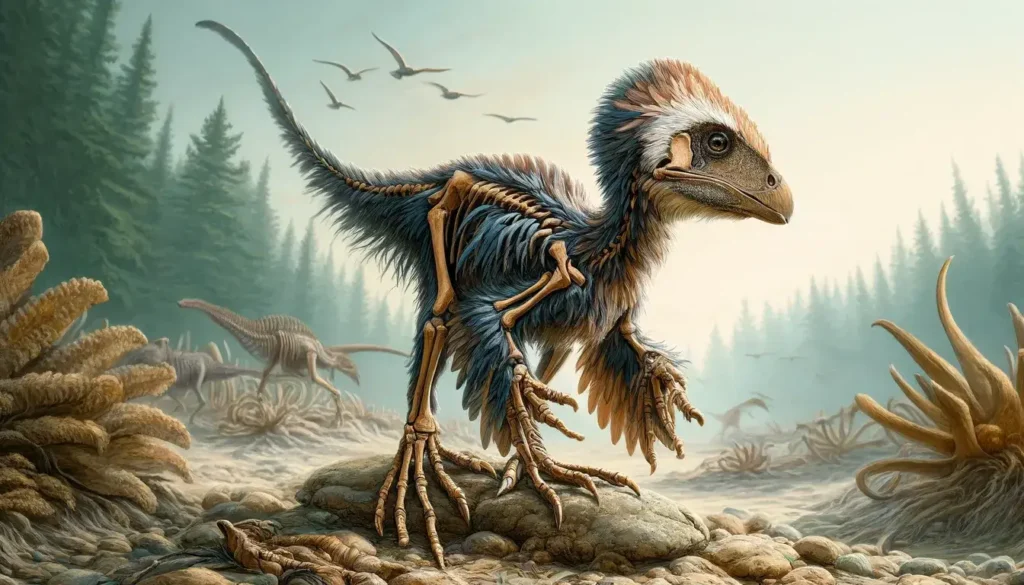
Enantiornithes had some weird features, like teeth and clawed wings, but in many ways they looked quite modern. They had:
- Perching feet
- Wishbones
- Beaks
These birds were so successful that they spread across the globe, from Europe to Australia to South America. Some were as small as finches, while others were the size of geese.
Late Cretaceous (80-66 million years ago)
In the Late Cretaceous, we see the first members of the modern bird lineage – the ornithurines. These include birds like Hesperornis and Ichthyornis.
Hesperornis was a flightless diving bird, like a loon or grebe. It had:
- Teeth
- Dense bones (an adaptation for diving)
- Lobed, webbed feet
Ichthyornis, on the other hand, was a tern-like flying bird. It had:
- A modern-looking beak
- A keeled breastbone (for flight muscles)
- Fused bones in its hands and feet
So by the end of the Cretaceous, many of the ingredients for modern birds were already in place. But it would take a catastrophic event – the end-Cretaceous mass extinction – to really let birds shine.
Environmental Factors
Of course, birds didn’t evolve in a vacuum. Their environment shaped them, and they in turn shaped their environment. The Cretaceous was a time of great change, and birds had to adapt to keep up.
Climate
The Cretaceous climate was warm and mild, with no polar ice caps. This allowed lush forests to grow, even at the poles. For birds, this meant an abundance of insects, seeds, and fruit to eat.
However, the climate wasn’t always stable. The Mid-Cretaceous saw a period of extreme warming, with CO2 levels 5-6x higher than today. Birds had to cope with this by:
- Migrating to cooler areas
- Evolving heat-dumping adaptations (like the toucan’s beak)
- Changing their breeding and nesting behavior
Vegetation
The warm climate of the Cretaceous led to an explosion of flowering plants, or angiosperms. By the end of the period, angiosperms dominated most environments.
For birds, this was a game-changer. Angiosperms provided:
- Abundant fruit and seeds to eat
- More insects to prey on
- New nesting sites and materials
Many bird groups, like songbirds and parrots, diversified in tandem with the flowering plants. Today, there are close relationships between certain bird and plant groups that stem from this time.
Sea Level
The Cretaceous was a time of high sea levels, thanks to the warm climate. At times, huge inland seaways split continents like North America in two.
For seabirds, this was a boon. More coastline meant more beaches for nesting and foraging. Fossils show an abundance of seabirds like Hesperornis in the Western Interior Seaway of North America.
Key Evolutionary Adaptations
The Cretaceous Era was a time of incredible innovation for birds. They evolved a suite of adaptations that allowed them to conquer the skies, diversify their diets, and spread to every corner of the globe. Let’s take a closer look at some of these game-changing adaptations.
| Adaptation | Function | Examples |
|---|---|---|
| Feathers | Insulation, flight, display | Contour feathers, down feathers, specialized flight feathers |
| Alula | Lift and stability at low speeds and high angles of attack | Found on the “thumb” of the wing |
| Keeled breastbone | Attachment point for powerful flight muscles | Allows for stronger, more efficient flight |
| Pygostyle | Supports tail feathers | Used for steering and braking during flight |
| Hollow bones | Reduces overall weight | Makes flight easier by reducing the bird’s mass |
| Beaks | Lightweight, versatile tools for feeding | Seed-cracking beaks, nectar-feeding beaks, fish-catching beaks |
| Air-filled skulls | Reduces weight | Helps with flight by further reducing the bird’s mass |
Feathers
Feathers are perhaps the most iconic bird trait, and for good reason. They’re not just for show – they serve a variety of important functions:
- Insulation: Feathers keep birds warm by trapping a layer of air next to the skin. This was crucial for early birds living in cold climates.
- Flight: The most obvious function of feathers is flight. The long, stiff feathers of a bird’s wing provide lift and thrust, while the soft, fluffy feathers of the body provide insulation and streamlining.
- Display: Many birds use their feathers for communication and mate attraction. Think of a peacock’s tail or a cardinal’s bright red plumage.
Feathers evolved from the simple, hair-like structures seen in dinosaurs like Sinosauropteryx. Over time, they became more complex and specialized, with a central shaft and interlocking barbs.
By the Cretaceous, birds had a variety of feather types, including contour feathers, down feathers, and even specialized feathers for silent flight (like those of owls).
Flight
The evolution of flight was a major milestone for birds. It allowed them to escape predators, find new food sources, and disperse to new environments.
The key adaptation for flight was the alula, a small set of feathers on the “thumb” of the wing. The alula acts like a little winglet, providing lift and stability at low speeds and high angles of attack.
Other adaptations for flight include:
- Keeled breastbone: A large, blade-like breastbone provides an attachment point for powerful flight muscles.
- Pygostyle: The fused tail vertebrae support the tail feathers, which are used for steering and braking.
- Hollow bones: Lightweight, air-filled bones reduce the overall weight of the bird, making flight easier.
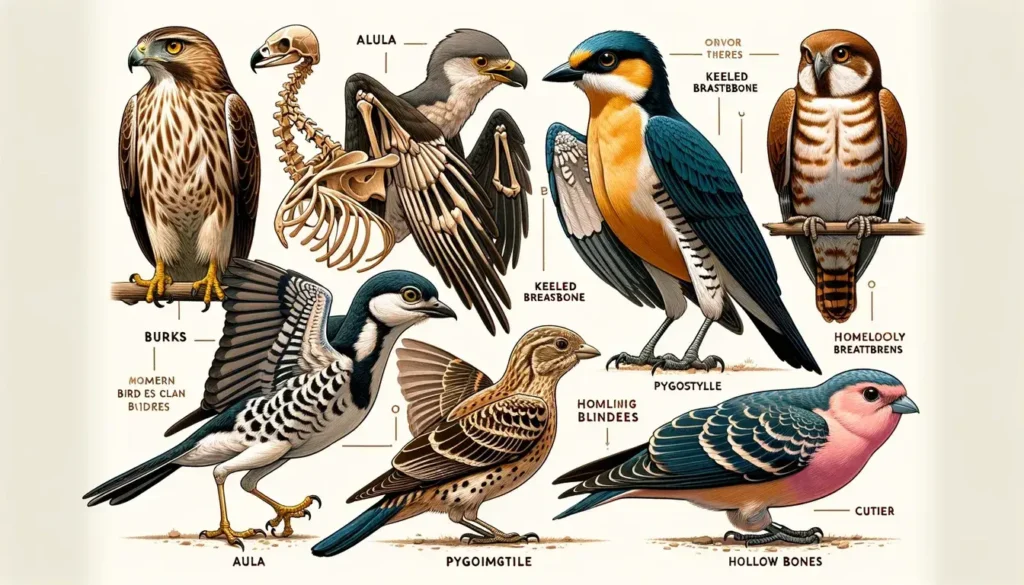
Beaks and Skulls
Bird beaks and skulls also underwent major changes during the Cretaceous. Early birds like Archaeopteryx had snouts full of teeth, similar to their dinosaur ancestors. But by the end of the period, most birds had evolved beaks.
Beaks are lightweight, versatile tools that can be adapted for a wide range of diets and lifestyles. Some examples:
- Seed-crackers: Finches and sparrows have short, thick beaks for cracking open seeds.
- Nectar-feeders: Hummingbirds and sunbirds have long, thin beaks for probing flowers.
- Fish-catchers: Herons and kingfishers have long, sharp beaks for spearing fish.
The evolution of the beak went hand-in-hand with changes to the skull. Bird skulls are lightweight and full of air pockets, which helps to reduce weight for flight.
Diversity of Cretaceous Birds
The Cretaceous Era was a time of experimentation and diversification for birds. Let’s meet some of the most notable players.
Archaeopteryx
Archaeopteryx is often called the “first bird”, but it’s really more of a transitional form between dinosaurs and birds. It had:
- Teeth
- Clawed wings
- A long, bony tail
But it also had feathers and wings, suggesting that it could probably fly (or at least glide).
Confuciusornis
Confuciusornis was a crow-sized bird from the Early Cretaceous of China. It had some modern features like:
- A toothless beak
- Fused tail vertebrae (pygostyle)
- Long, blade-like wings
But it also retained some dinosaur-like traits, like claws on its wings.
Enantiornithes
The enantiornithes, or “opposite birds”, were a diverse group that dominated the Cretaceous skies. They ranged in size from tiny finches to large geese, and had some unique features like:
- Teeth
- Clawed wings
- A backwards-facing pubis bone (hence the name “opposite birds”)
Despite their weird anatomy, enantiornithes were very successful. They spread to every continent and evolved into a variety of ecological niches.
Transition to Modern Birds
So how did we get from the weird and wonderful birds of the Cretaceous to the birds we know and love today? It took a major catastrophe – the end-Cretaceous mass extinction.
66 million years ago, a massive asteroid struck the Earth, wiping out 75% of all species – including the non-avian dinosaurs. Birds were hit hard too, with groups like the enantiornithes going completely extinct.
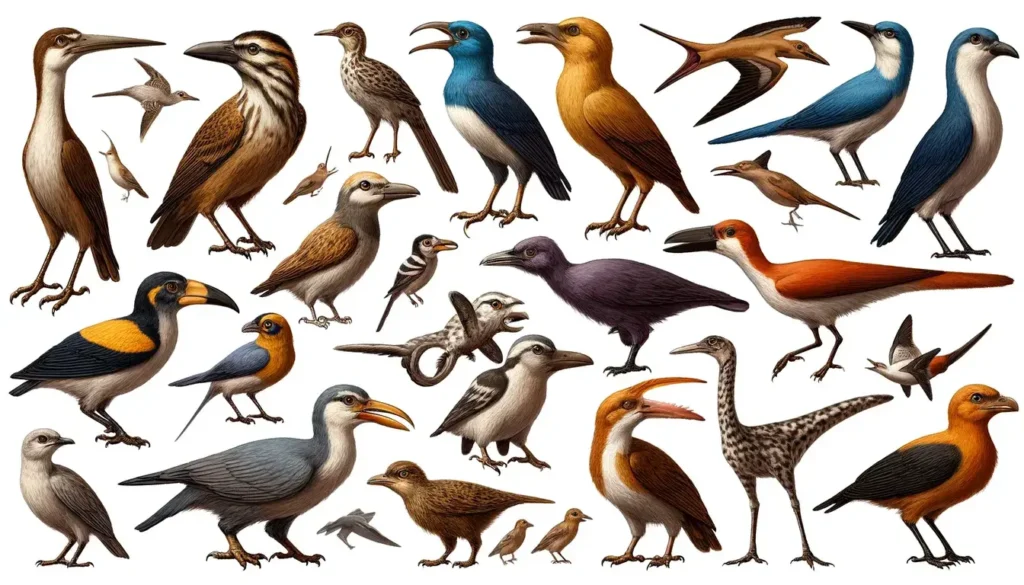
But some birds survived, and they gave rise to the modern bird lineage – the neornithes. These survivors had some key traits that helped them thrive in the post-extinction world:
- Beaks instead of teeth
- A keeled breastbone for flight
- A pygostyle for steering and braking
- Fusion of bones in the hands and feet
From these survivors, birds diversified into the nearly 11,000 species we see today – from hummingbirds to ostriches to penguins.
Conclusion
The rise of modern birds during the Cretaceous Era is an incredible story of adaptation, diversification, and survival. From their humble beginnings as small, feathered dinosaurs, birds evolved into a dazzling array of forms and conquered the skies.
Through innovations like feathers, beaks, and specialized flight adaptations, birds were able to spread to every corner of the globe and fill a variety of ecological niches.
But the story of birds is also one of resilience. Despite facing a devastating mass extinction at the end of the Cretaceous, birds persevered and gave rise to the diversity we see today.
So the next time you hear a songbird twittering in your backyard or see a hawk soaring overhead, take a moment to appreciate the amazing evolutionary journey that made it all possible.
Birds truly are modern-day dinosaurs – and they have the Cretaceous Era to thank for their success.
I hope this deep dive into bird evolution has given you a new appreciation for our feathered friends. Keep exploring, keep learning, and keep marveling at the wonders of the natural world!

